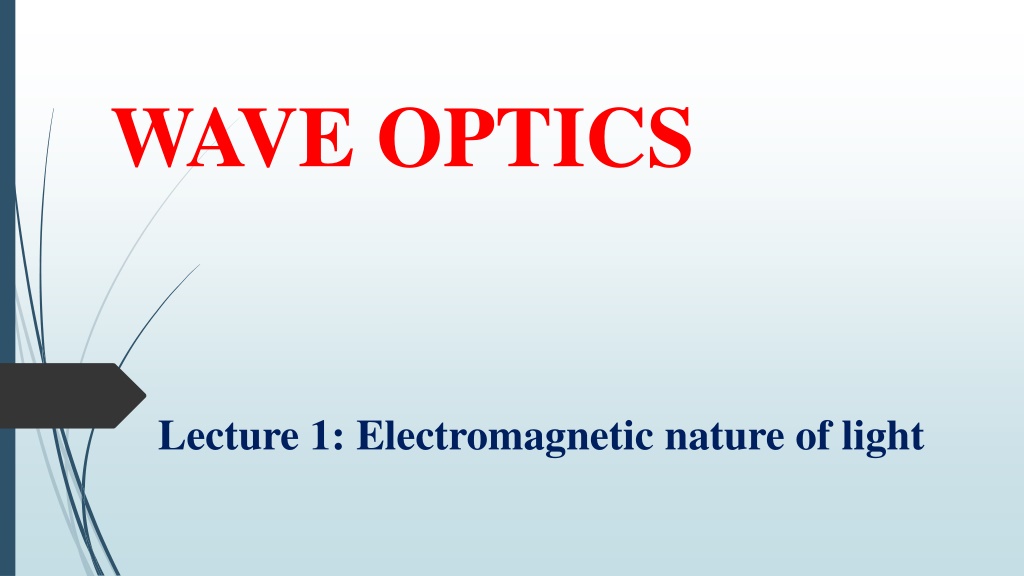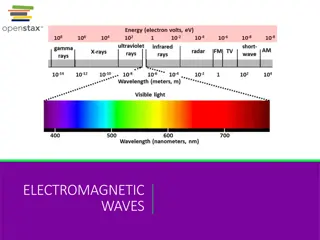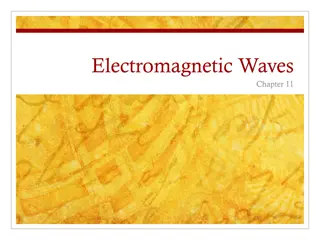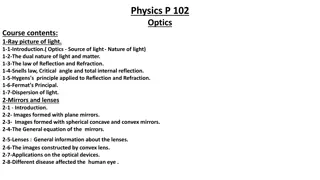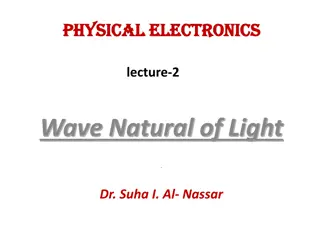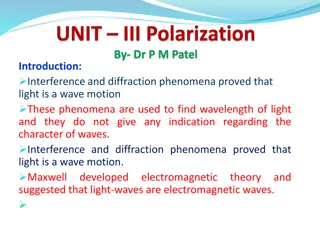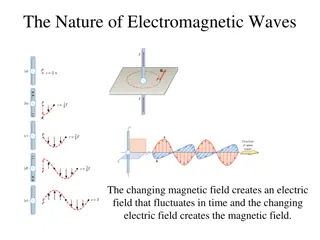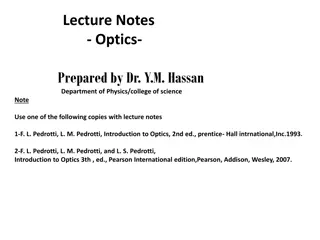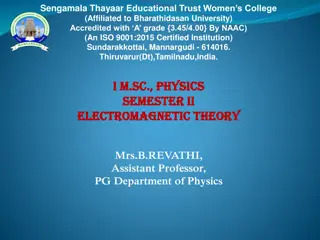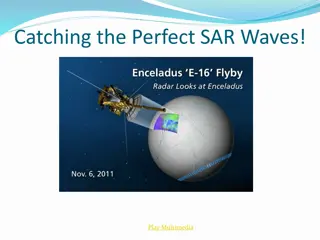Understanding the Electromagnetic Nature of Light in Wave Optics
Exploring the electromagnetic properties of light, this lecture covers the dual nature of light as both a wave and particles, the quantized particle nature of light known as photons, and the manifestation of the electromagnetic nature of light through Maxwell's equations. It delves into wavefronts, discussing their definitions and properties, as well as Huygens' principle which explains how wavelets propagate in different mediums.
Download Presentation

Please find below an Image/Link to download the presentation.
The content on the website is provided AS IS for your information and personal use only. It may not be sold, licensed, or shared on other websites without obtaining consent from the author. Download presentation by click this link. If you encounter any issues during the download, it is possible that the publisher has removed the file from their server.
E N D
Presentation Transcript
WAVE OPTICS Lecture 1: Electromagnetic nature of light
PROPERTIES OF LIGHT Light are energy It travel in the speed of 3 108m/sec It has dual nature of both wave and particles. As wave- It propagate itself through a disturbance of electric and magnetic field being perpendicular to each other. It can interfere with other wave to cancel or amplify the amplitude. Colour of the light depend on the wavelength of it.
As particle Light has quantized particle called photon which travel through the space. Photon has specific or quantized energy thus light is also quantized. Photoelectric effect, scattering are some consequence of its particle nature.
Electromagnetic nature of the light Electromagnetic radiation consist of electric and magnetic field mutually perpendicular to the direction of it propagation. Maxwell equation beautifully prove the manifestation of electromagnetic nature of light.
WAVEFRONT Definition :- wavefront is the locus of the all the points having same phase at a given instant. For waves propagating in 1D wavefront is point, 2D it is curve and in 3D it is surface.
Its properties For a EM wave, wavefront is always perpendicular to the ray which denotes the direction of the propagation. At every point the plane containing electric and magnetic field vector for an EM wave, is tangential to the wavefront. Wavefront is not a stationary object. It propagates along the direction of propagation of the wave with a velocity same as that of the wave.
Huygens principle Huygens principle stated that all points of a wave front of light in a vacuum or transparent medium may be regarded as new sources of wavelets that expand in every direction at a rate depending on their velocities or Every point on a wave-front may be considered a source of secondary spherical wavelets which spread out in the forward direction at the speed of light. The new wave-front is the tangential surface to all of these secondary wavelets.
